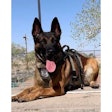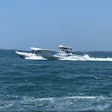A federal judge has sentenced a high-ranking Colombian narco-terrorist to 29 years in prison relating to a conspiracy to import ton-quantities of cocaine, the Drug Enforcement Administration announced.
Washington D.C. District Judge Thomas F. Hogan sentenced Erminso Cuevas "Mincho" Cabrera, a top associate the Fuerzas Armadas Revolucionarias de Colombia (Revolutionary Armed Forces of Colombia, or FARC), on Tuesday.
Cuevas Cabrera, 49, worked as the chief of cocaine manufacturing for the FARC's 14th Front while his brother, Fabian Ramirez, served as commander of the Southern Bloc and headed the 14th Front.
After a two-month trial, on April 13, Cuevas Cabrera was found guilty of one count of conspiring to import cocaine into the U.S. and one count of conspiring to distribute cocaine with the knowledge and intent that it would be imported into the U.S. He had been extradited on Sept. 19, 2007.
From approximately 1998 through 2004, Cuevas Cabrera conspired with others to manufacture and distribute tons of Colombian cocaine that he knew would be imported into the U.S., according to evidence presented at trial. Co-defendant, Juan Jose "Chiguiro" Martinez Vega was found guilty of the same charges.
The FARC has been designated by the State Department as a Foreign Terrorist Organization (FTO). During the time of the conspiracy, the organization consisted of 12,000 to 18,000 members and 77 distinct military units called "fronts" organized by geographic location. The fronts are grouped into seven "blocs."
The FARC is led by a seven-member secretariat and a 27-member central general staff called Estado Mayor that is responsible for FARC's cocaine policies. FARC is the world's largest cocaine manufacturer, supplying more than half the world's cocaine and nearly two-thirds of the cocaine imported into the U.S.
Initially, FARC imposed a "tax" on individuals involved in each stage of cocaine production; in the 1990s, FARC became the exclusive buyer of the raw cocaine paste used to make cocaine in all areas under FARC occupation.
In the late 1990s, the FARC leadership voted unanimously to expand coca production and international distribution routes; increase the number of crystallization labs; appoint members within each front to take charge of coca production; raise the prices paid by FARC to peasant farmers who made cocaine paste; and mandate that better chemicals be used to increase cocaine paste quality.
In late 2001 or early 2002, FARC leadership increased cocaine trafficking overseas, including to the U.S., and established better methods for exchanging cocaine and cocaine paste for weapons, and increasing their payment to the peasant farmers, or campesinos.
















